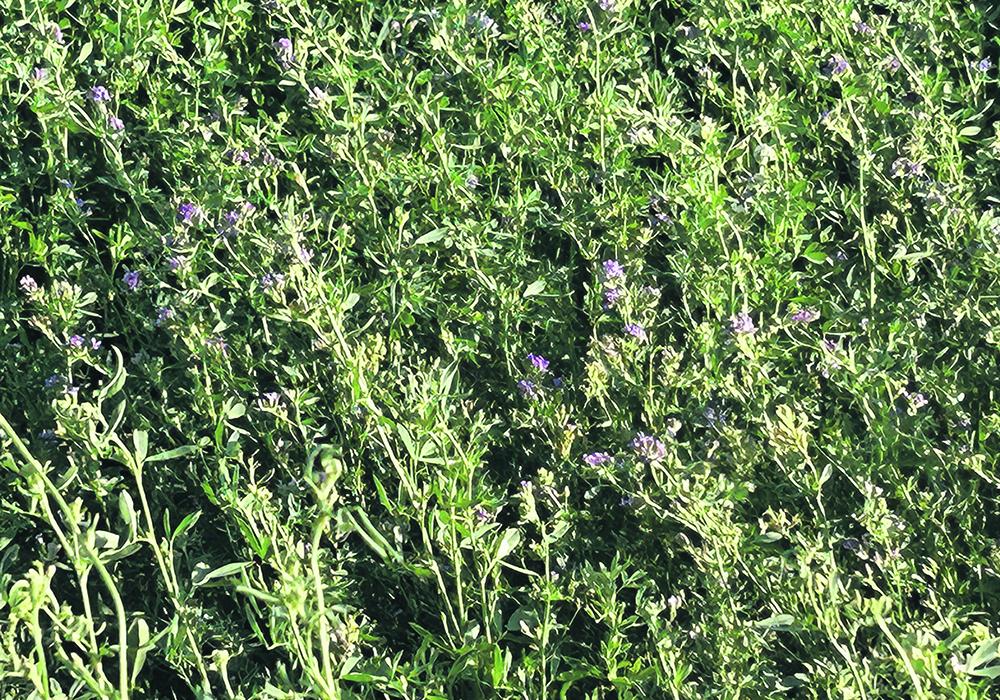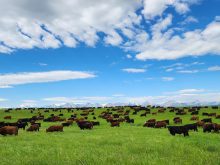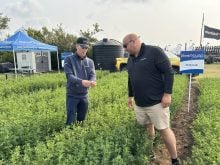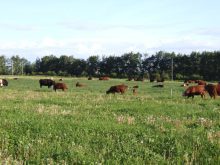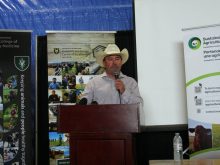Research finds that the relationship between alfalfa genetics and microbes in the soil can alter growth of the plants
WINNIPEG — Choosing the right alfalfa variety can make a difference, possibly a huge difference, when producers are rejuvenating a pasture.
After several years, the productivity of a pasture will decline and many ranchers choose to over-seed or sod-seed alfalfa to revive the pastureland.
Farmers will likely select a high-yielding alfalfa variety that is adapted to the growing conditions in their part of the Prairies.
Read Also

Canada’s slaughter horse industry lacks transparency
The lack of clear reporting and public access to data keeps the industry largely hidden, leaving questions about humane treatment and traceability unanswered.
But another factor to consider is the microbiology of the soil.
University of Saskatchewan research has found that the relationship between alfalfa genetics and the microbes in the soil can alter the growth of alfalfa plants.
“The soil microbial community of the existing/older pasture plays a key role as to how successful rejuvenation can be and can even inhibit future plant growth. Some soil microbes can reduce plant growth, whereas others can increase it,” says a summary of the U of S research, published on the Beef Cattle Research Council (BCRC) website.
“Responses to these microbes is dependent on alfalfa varieties, with some cultivars showing a 25 per cent reduction in production and others increasing their production by 90 per cent when planted in soil from the same … pasture.”
Jonathan Bennett, a U of S plant scientist, was the leader of the study, which looked at alfalfa and which varieties respond positively to soil microbes within older alfalfa fields.
The productivity of a pasture will decline over time, particularly the legume component, says the BCRC summary of the research.
Why that is isn’t fully understood.
“The historical thought around (why) is chemical auto-toxicity or soil sickness developing through the production of secondary chemicals (from) alfalfa,” said Bennett.
Another possibility is that genetics in the alfalfa variety can trigger a biological response in the soil.
“We know there is lots of different breeding for (disease) resistance in alfalfa varieties,” Bennett said.
The resistant genes in the alfalfa could affect how the plant interacts with bacteria in the soil.
“There is evidence that some alfalfa varieties respond differently to (specific) beneficial microbes.”
To gain a better understanding of this interaction, Bennett and his team tested 20 alfalfa varieties and grew the plants in a greenhouse.
They used soil that was collected from 12 pastures across Saskatchewan, including sites near Shellbrook, Whitewood and Val Marie.
“We covered an area (that represents) basically all of the soil zones in Saskatchewan.”
After growing the 20 alfalfa varieties in the different soil types, the scientists studied the amount of biomass produced and analyzed the data.
Certain cultivars responded positively to the soil bacteria in existing and older pastures.
Other varieties did not.
“Five cultivars produced more forage when grown with pasture microbes with an average 20 per cent increase in forage produced,” says the BCRC summary of the project.
“Seven cultivars and the tap-rooted common seed produced less forage, with (three) cultivars … producing more than 30 per cent less.”
The differences in production were a bit surprising because the “size of the variation is quite large,” Bennett said.
However, the results come with a grain of salt.
The conditions in a greenhouse are very different from the realities of the field.
“Nobody is growing alfalfa in a greenhouse to feed their cattle,” Bennett said.
He would like to replicate the greenhouse experiments with trials in the real world. Before that happens, he needs to secure funding and complete a large project on grasslands, pastures and carbon sequestration.
In the meantime, ranchers could experiment with different alfalfa varieties and test the interaction with soil biology in their pastureland.
Farmers shouldn’t select a variety solely on genetics and soil micro-organisms, but if two alfalfa varieties have similar traits and performance, maybe try the one that produced more forage in Bennett’s greenhouse experiment.
The list of varieties in the study and the results of the greenhouse experiment can be found here.




